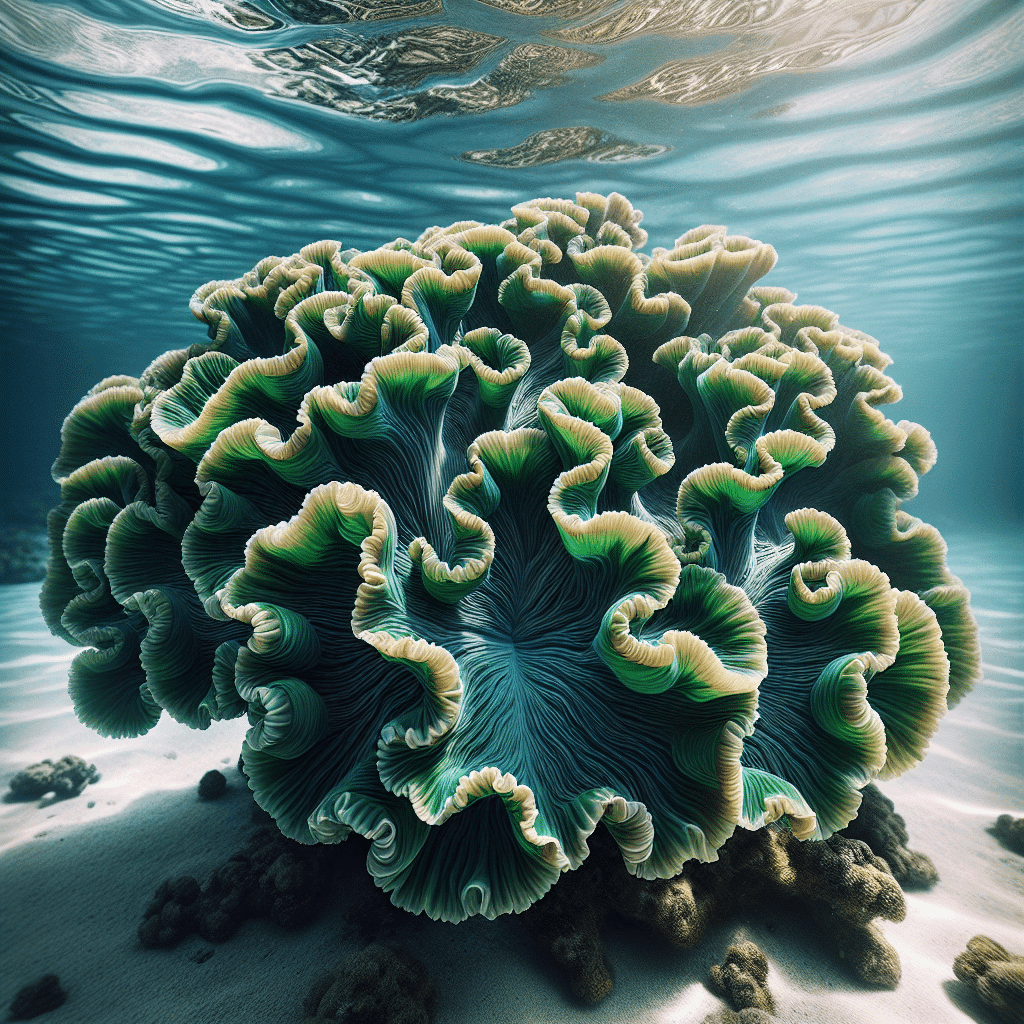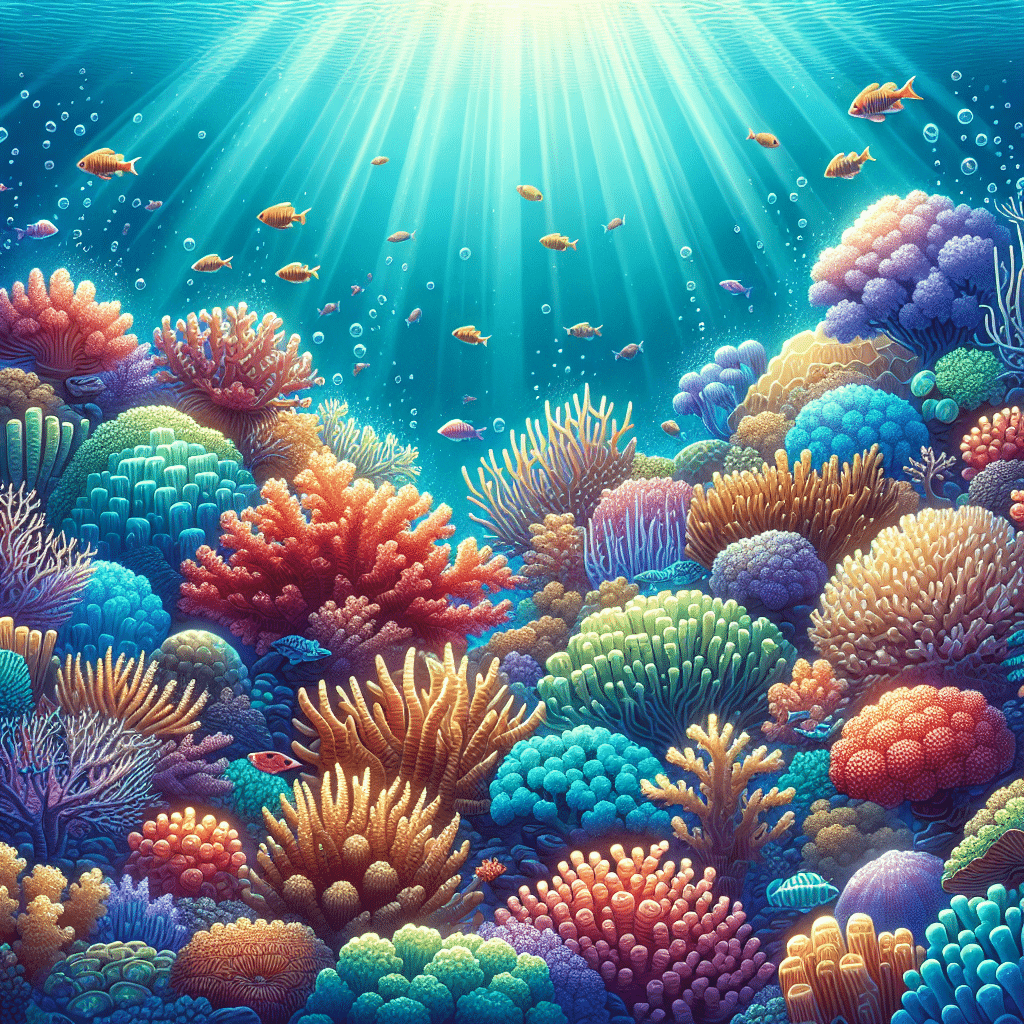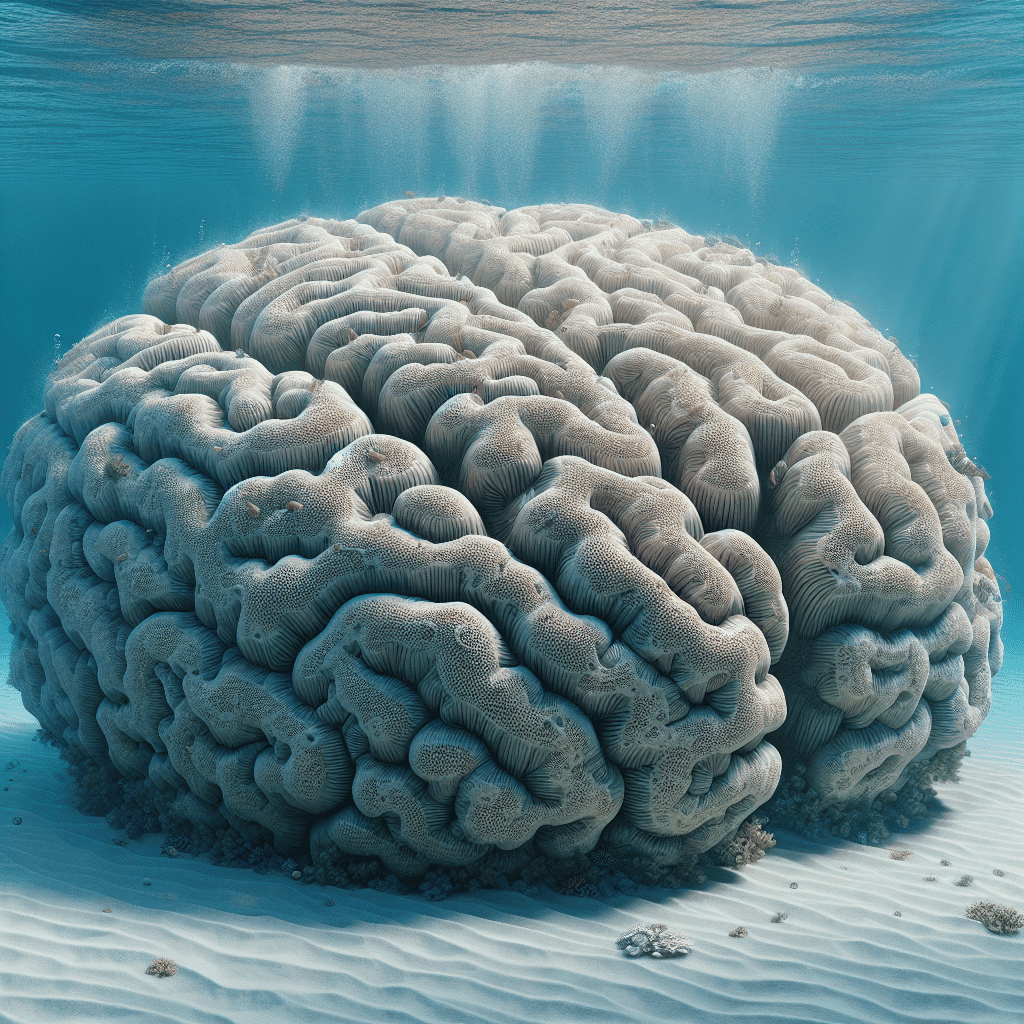Exploring Lettuce Coral
Overview of Lettuce Coral
Lettuce coral, also known as lettuce leaf coral, is a fascinating stony coral species that I find intriguing. It grows in a unique conical shape with giant ruffled edges that resemble big cabbages. This coral is most commonly found in muted colors such as yellow, green, and brown. It thrives in shallow waters, typically at depths of up to 20 meters across the Indo-Pacific region. Not only does it contribute to the biodiversity of coral reefs, but it also offers a sheltered habitat for various marine life, providing them with a safe space to hide from predators (Citrus Reef).
Habitat and Forms of Lettuce Coral
Lettuce coral is typically found in shallow coral reefs, where it grows in colonies and forms large plate-like structures. These structures provide not just a home for the coral itself but also a habitat for other marine organisms. The coral’s growth pattern allows it to capture plankton, which is its primary food source.
The habitats of lettuce coral can be described as follows:
| Habitat Type | Depth Range | Color Variations |
|---|---|---|
| Shallow Coral Reefs | Up to 20 meters | Yellow, Green, Brown |
This unique coral plays a crucial role in maintaining the health and beauty of reef ecosystems. If you’re interested in learning more about different types of corals, check out our section on corals for additional information on other species like brain coral and black coral.
Care and Maintenance
Taking care of lettuce coral is essential for keeping it healthy and thriving in your reef tank. Here’s what I’ve learned regarding feeding, water quality, and managing diseases and pests that can affect this beautiful coral.
Feeding Lettuce Coral
Lettuce coral primarily feeds on plankton and other small particles in the water. In a home aquarium, it’s important to replicate its natural diet to promote growth and health. I often supplement the feeding process by adding coral foods specifically designed for filter feeders.
| Feeding Method | Description |
|---|---|
| Direct Feeding | Using liquid or powdered coral food that can be broadcasted in the water column. |
| Suspension Feeding | Allowing tiny particles to remain suspended in the water for the coral to capture. |
If you’re unsure about the right food, look for products labeled for corals and specifically those suitable for lettuce coral. Feeding should be done a few times a week to ensure it receives adequate nutrition.
Water Quality for Lettuce Coral
Maintaining proper water quality is crucial for the health of lettuce coral. Here are the key parameters I monitor:
| Parameter | Ideal Range |
|---|---|
| Temperature | 75°F to 82°F (24°C to 28°C) |
| pH | 8.1 to 8.4 |
| Salinity | 1.023 to 1.025 specific gravity |
| Nitrate | Below 10 ppm |
| Phosphate | Below 0.03 ppm |
Regular water testing helps to keep these levels stable. I use a quality test kit to monitor these parameters and make adjustments as necessary. A properly cycled tank with adequate filtration will also help maintain water quality.
Diseases and Pests of Lettuce Coral
Like many corals, lettuce coral can be susceptible to various diseases and pests. Here are a few common issues I keep an eye on:
| Disease/Pest | Description | Treatment |
|---|---|---|
| Brown Jelly Disease | A bacterial infection causing the tissue to decay. | Remove affected areas and improve water quality. |
| Aiptasia | A pest anemone that can sting and harm corals. | Use Aiptasia X or peppermint shrimp for removal. |
| Coral-eating Nudibranchs | These pests can consume coral tissue. | Manually remove them and check for eggs on the coral. |
Regular observation and prompt action are key in preventing significant damage. If I notice any issues, I research the best treatment options or consult with fellow hobbyists or professionals.
By understanding how to feed lettuce coral properly, ensure high water quality, and identify potential diseases or pests, I can provide a healthy environment for this stunning coral in my reef tank. For more on different coral types, check out brain coral and mushroom coral for additional care insights.
Lettuce Coral in Reef Tanks
When it comes to placing lettuce coral in my reef tank, there are a few important factors to consider for optimal growth and health. Proper placement and lighting are crucial to ensure that this coral thrives and adds beauty to my aquarium.
Placement in Reef Tanks
Lettuce coral grows upwards in a unique conical shape, which can create a stunning visual in a reef tank. I find that placing it in the mid to upper levels of the tank is ideal, as this allows it to receive ample light while also providing enough space for its ruffled edges to expand. This coral often prefers areas with moderate water flow, so I make sure to avoid spots with strong currents that could damage its delicate structure.
It’s also beneficial to keep lettuce coral away from aggressive corals, as they can compete for space and resources. A good rule of thumb is to leave a few inches of space around the lettuce coral to allow for growth and to prevent any unwanted interactions.
Lighting Requirements for Lettuce Coral
Lighting plays a significant role in the health of lettuce coral. This coral species typically thrives under moderate to high lighting conditions. I usually use LED lights that can provide the necessary spectrum for photosynthesis while also being energy-efficient.
Here’s a quick breakdown of lighting recommendations for lettuce coral:
| Lighting Type | Recommended Intensity |
|---|---|
| LED | Moderate to High |
| T5 Fluorescent | Moderate to High |
| Metal Halide | High |
When choosing lighting, I try to adjust the intensity based on the depth of my tank and the specific needs of my corals. It’s essential to monitor my lettuce coral for signs of bleaching or stress, which can indicate that the lighting might be too intense or insufficient.
By ensuring proper placement and lighting for my lettuce coral, I can create a thriving environment that supports its growth and contributes to the overall beauty of my reef tank. If I’m interested in learning more about the variety of corals I can keep, I can check out other species like brain coral and mushroom coral.
Threats to Coral Reefs
Climate Change Impact on Coral Reefs
Coral reefs are incredibly sensitive ecosystems, particularly vulnerable to climate change. I’ve learned that warm water corals can become stressed when water temperatures rise, which often leads to a process known as bleaching. During bleaching, corals expel their symbiotic algae, known as zooxanthellae, which they rely on for energy. This phenomenon not only makes them more susceptible to disease but can also lead to starvation.
Recent events have illustrated the severity of this issue. For example, in February 2024, the Great Barrier Reef experienced unprecedented heat, resulting in nearly 80% of coral outcrops bleaching (UNEP). Between 2009 and 2018, a staggering 14% of the world’s coral cover was lost due to repeated bleaching events. A specific bleaching event from 2014 to 2017 saw about 9% of the world’s corals die (UNEP).
The outlook is grim; even if global temperature rise is limited to 1.5°C, it’s projected that 70% to 90% of reef-building corals will die. If temperatures increase by 2°C, nearly all (99%) of these corals may perish (UNEP).
Conservation Efforts for Coral Reefs
Conservation efforts are crucial in the fight to protect coral reefs from the impacts of climate change. Researchers have identified certain areas, known as refugia, where corals are showing resilience against the climate crisis. These pockets of water are essential for preserving coral diversity and health. Efforts are now focused on protecting these refugia and other coral hotspots from additional stressors, such as pollution, over-fishing, and coastal development (UNEP).
It’s important for reef tank hobbyists like me to stay informed and support conservation initiatives that aim to maintain the health of coral ecosystems. Engaging in sustainable practices, such as responsible aquarium care and supporting organizations dedicated to coral preservation, can make a significant difference in the fight against coral decline. By contributing to these efforts, I can help ensure that corals, including my beloved lettuce coral, continue to thrive for generations to come.
Coral Symbiosis
Coral-Algae Relationship
The relationship between corals and algae is an incredible example of symbiosis. The mutually beneficial interaction began over 210 million years ago. Algae, which live within the coral tissues, receive shelter and nutrients, while corals benefit from the nutrients produced through photosynthesis. This relationship not only gives coral reefs their vibrant colors but also significantly contributes to their growth and health. Studies show that symbiotic corals can deposit calcium carbonate, which forms their hard skeletons, up to ten times faster than non-symbiotic corals (Princeton University News).
This partnership allows corals to thrive in nutrient-poor waters, which is crucial for their survival. By having algae in their tissues, corals can harness energy from sunlight, making it easier for them to grow and expand into vast reef structures. The algae provide the coral with essential nutrients, creating a cycle of support that is vital for the reef ecosystem.
Importance of Symbiosis in Coral Reefs
The importance of this symbiotic relationship cannot be overstated. Coral reefs are often referred to as the “rainforests of the sea,” providing habitat for roughly one-fourth of all marine life. The health of these ecosystems relies heavily on the successful partnership between corals and algae. Without this relationship, many coral species would struggle to survive, especially in environments with limited nutrients.
The symbiosis not only enhances the coral’s food supply but also plays a critical role in building and maintaining reefs. Healthy coral reefs support diverse marine life and help protect shorelines from erosion. As a reef tank hobbyist, understanding this relationship is crucial for maintaining a thriving aquarium environment. When caring for corals like lettuce coral, it’s essential to ensure that the conditions in the tank promote the health of both the corals and their algal partners.
By recognizing the importance of coral-algae symbiosis, I can better appreciate the delicate balance that sustains coral ecosystems and take steps to protect these vital habitats in my reef tank. If you’re interested in exploring more about different types of corals, check out our articles on brain coral, mushroom coral, and torch coral.



